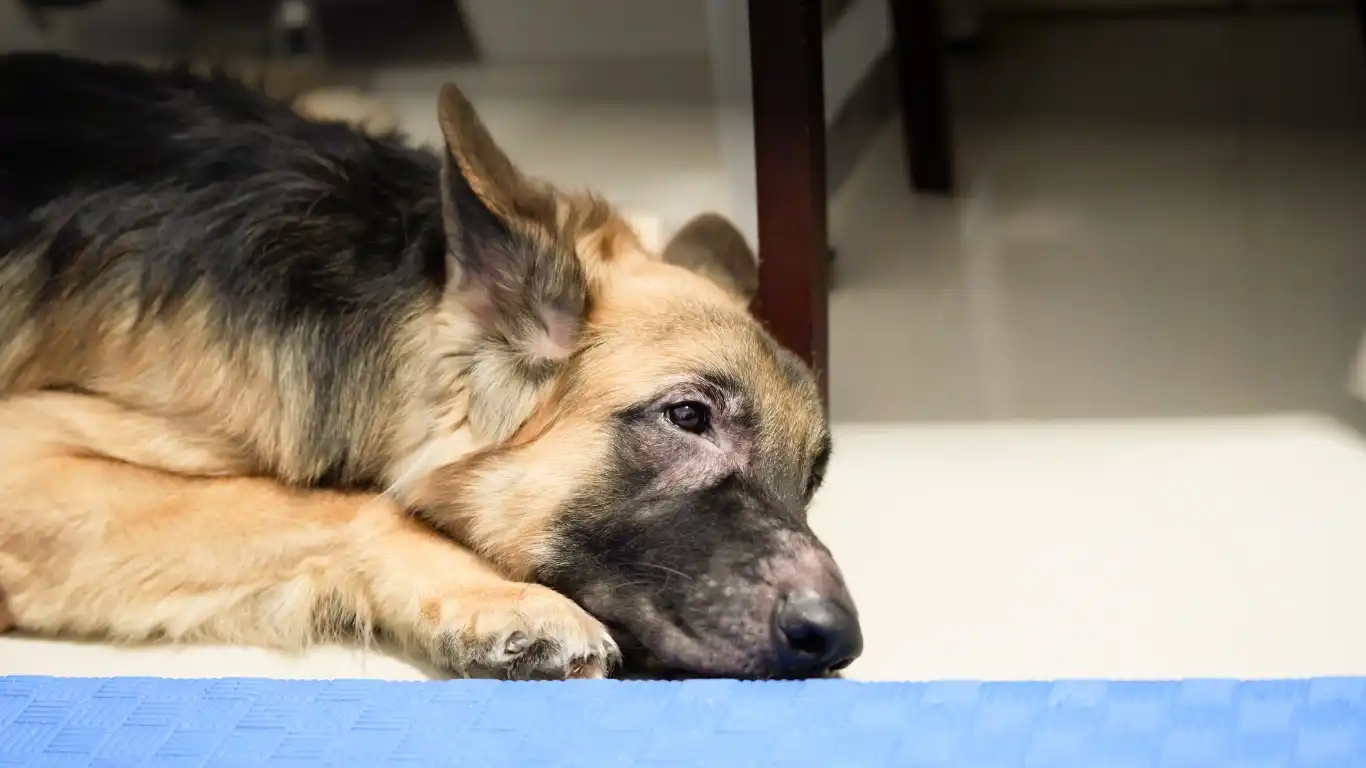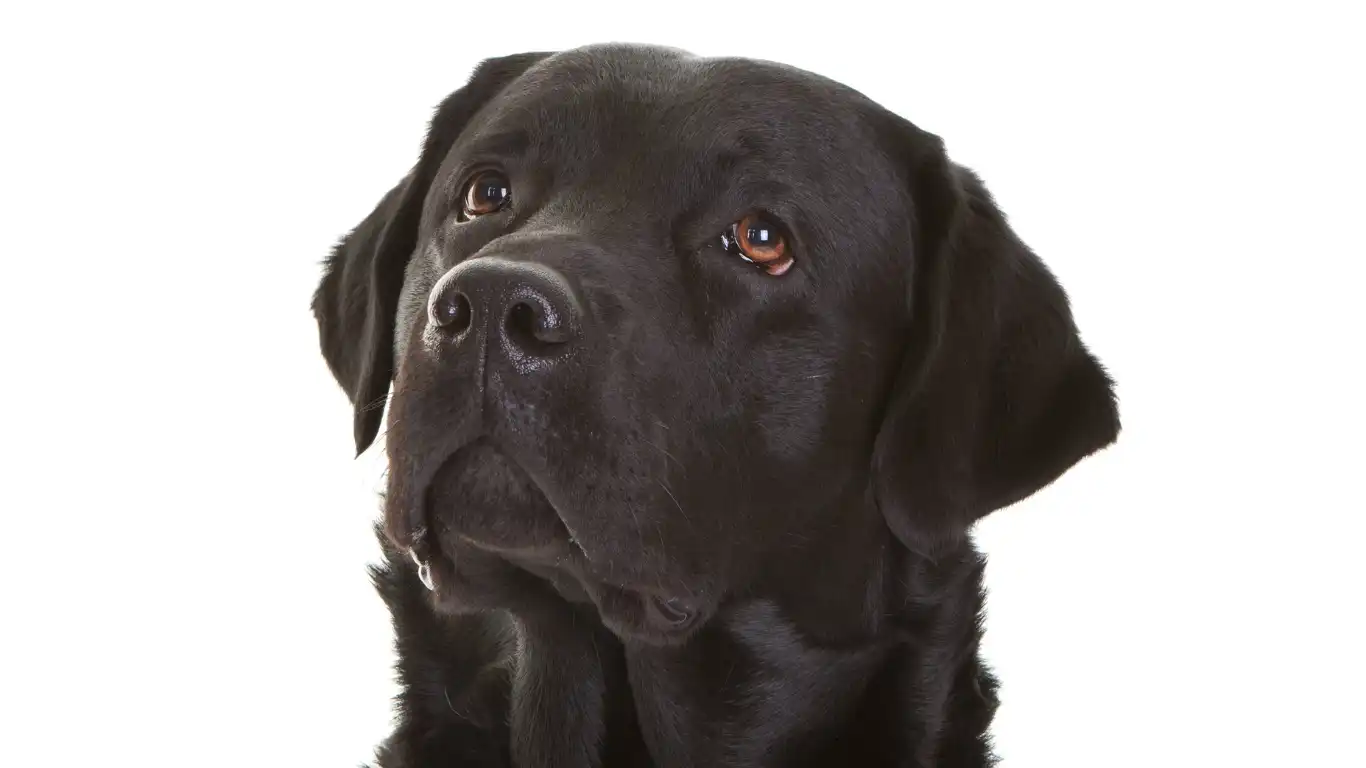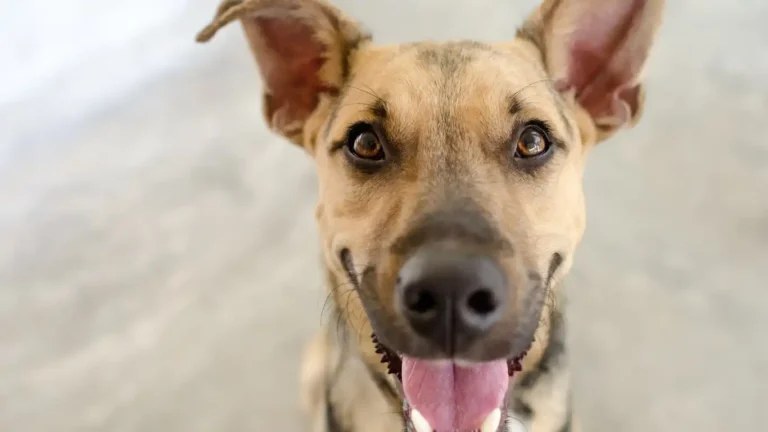Best Ways to Prevent Obesity in Dogs and Keep Your Pup Healthy!
As a pet nutritionist with years of experience working with dogs in veterinary clinics, I’ve seen firsthand how much obesity can affect a dog’s overall health and quality of life. Whether you’re a seasoned pet owner or a newbie, knowing the best ways to prevent obesity in dogs is crucial. Obesity isn’t just about a few extra pounds—it can lead to serious health issues, such as joint problems, diabetes, heart disease, and even a shortened lifespan. With so many myths and misconceptions floating around, it’s important to get the facts straight and set your dog up for a healthy life. So, let’s dive into some practical tips and advice on how to prevent obesity in dogs and keep them in tip-top shape!
Why Preventing Obesity in Dogs is Essential
When I started out as a pet nutritionist, I quickly realized that many dog owners didn’t understand the dangers of obesity. A pudgy dog might seem cute, but carrying excess weight can put immense pressure on their joints, especially in older dogs. It also makes it harder for them to breathe, and they’re more prone to developing chronic conditions that could reduce their quality of life. Trust me—it’s heartbreaking to see a dog struggle due to something that could’ve been prevented with the right care and attention.
Understanding Dog Obesity: It’s More Than Just Extra Pounds
So, what does obesity really mean for dogs? Well, it’s not just about looking a bit rounder than usual. Obesity occurs when a dog has too much fat relative to lean tissue. It’s different from being overweight, as it often involves long-term fat buildup, which can slowly creep up on your pet. Many owners don’t realize their dog is obese until it’s too late, and that’s why early intervention is so important.

How to Spot If Your Dog is Overweight or Obese
If you’re unsure whether your dog is obese or just a little on the chunky side, don’t worry, you’re not alone! One of the easiest ways to check is by feeling around their ribs. Ideally, you should be able to feel the ribs easily, but not see them sticking out. Another quick method is looking at their waistline from above. If the dog’s belly bulges out like a muffin top, it’s a red flag. If you’re still uncertain, your vet can give you a body condition score, which is a simple but effective way of evaluating your dog’s weight.
Common Causes of Obesity in Dogs
In my years working with dogs, I’ve learned that there’s no one-size-fits-all reason for dog obesity. It often boils down to a combination of factors, including diet, lifestyle, and genetics. Here are some of the top culprits:
- Overfeeding and Treats: We all love to spoil our dogs with tasty snacks, but too many treats and table scraps can lead to weight gain. Make sure to factor treats into your dog’s daily calorie intake.
- Lack of Exercise: Dogs that don’t get enough exercise are more likely to gain weight. Regular playtime, walks, and mental stimulation are key to keeping them active and fit.
- Neutering or Spaying: While neutering and spaying have many health benefits, they can also reduce your dog’s metabolic rate, making it easier for them to gain weight.
- Age: As dogs get older, their metabolism slows down, and they’re less likely to be as active as they once were. This makes managing their weight even more important in their later years.
Best Ways to Prevent Obesity in Dogs
Now that we know why obesity happens, let’s take a closer look at the best ways to prevent it from becoming an issue. I’ve spent years helping owners keep their pets at a healthy weight, and these tips have worked wonders for many of the dogs I’ve worked with.
1. Measure Your Dog’s Food
It’s easy to pour out food without thinking about portion sizes, but this can quickly lead to overeating. One of the simplest and most effective ways to prevent obesity in dogs is by measuring their food. As a pet nutritionist, I always recommend using a standard measuring cup to ensure that your dog gets the correct amount of food for their breed, age, and activity level.

2. Choose the Right Food for Your Dog’s Needs
Not all dog food is created equal, and choosing the right type of food is critical for maintaining a healthy weight. You want to make sure your dog is getting high-quality, nutritious food that’s tailored to their specific needs. Look for food that is rich in protein and low in empty calories. Avoid foods filled with fillers like corn, wheat, and soy, as they contribute little nutritional value. Your vet or a pet nutritionist can help you select the best food for your dog.
3. Keep Track of Their Weight
Regular weight checks are a great way to ensure your dog stays on track. If you’re unsure of how often to weigh your dog, I recommend doing so at least once a month. Any sudden weight gain or loss should be addressed immediately, as it could indicate an underlying health problem.
4. Provide Plenty of Exercise
Exercise is key to maintaining a healthy weight. I can’t stress this enough—make sure your dog is getting at least 30 minutes to an hour of exercise each day, depending on their size and energy level. Whether it’s a walk around the neighborhood, a game of fetch, or a trip to the dog park, exercise helps burn off those extra calories and keeps your dog’s metabolism working properly.

5. Avoid Human Food
I get it—it’s hard to resist giving your dog a little taste of your food, especially when they’re looking at you with those big puppy eyes. But feeding your dog human food can lead to serious weight issues. Many human foods are high in fat, sugar, and salt, which can cause your dog to gain weight quickly. Stick to dog-safe treats and meals, and remember that a healthy dog is a happy dog!
Conclusion
Preventing obesity in dogs requires a combination of proper nutrition, regular exercise, and vigilance. By following these tips, you can ensure that your dog stays fit, healthy, and happy throughout their life. Obesity may seem like an easy problem to overlook, but trust me, as someone who’s worked with countless dogs over the years, I can tell you it’s far easier to prevent than to reverse. So start today—your dog will thank you for it!
Understanding Your Dog’s Behavior: Why They May Beg for More Food
One thing I’ve noticed over the years is that many pet owners struggle with their dog begging for food. Trust me, it’s not just because they want to be spoiled! Begging can actually stem from several reasons, like boredom, anxiety, or simply associating food with affection. Dogs are very smart, and they can quickly learn that begging gets them what they want. I can’t count how many times I’ve had clients tell me their dog is “always hungry” or that they “can’t resist those eyes.” But the truth is, giving in can lead to weight problems and reinforce bad habits.
1. Avoid Reinforcing Begging Behavior
If your dog is constantly begging for food, it’s crucial to set boundaries. It may seem tough at first, but maintaining consistency is key. Ignore the pleading eyes, and don’t give in to the requests for table scraps. I know it’s hard, but your dog will eventually learn that begging doesn’t work. Instead, redirect their attention to a fun game, a walk, or even some mental enrichment activities. You’ll be doing your dog a huge favor in the long run, and it’ll help prevent unnecessary weight gain.

2. Establish a Feeding Schedule
One of the easiest ways to combat begging and overeating is by setting a feeding schedule for your dog. In my experience, I’ve found that dogs thrive on routine. By feeding them at the same time each day, their body will get used to the routine, and they won’t feel as hungry between meals. If your dog is on a schedule, they’re less likely to beg for food and more likely to stay healthy.
Why Exercise Is More Than Just Weight Management
We’ve already discussed how exercise helps prevent obesity, but I want to highlight why it’s more than just about burning calories. Regular exercise is an essential part of a dog’s mental and emotional well-being. Dogs that don’t get enough physical activity can become bored, anxious, or even depressed. I’ve seen firsthand how exercise can turn a mopey, sluggish dog into a lively, happy one. When you add regular exercise into your dog’s routine, you’re not just helping them maintain a healthy weight—you’re enriching their life!
3. Find the Right Type of Exercise for Your Dog
Not all dogs are the same, and this extends to exercise preferences too. While some dogs love long walks and runs, others might prefer shorter, more intense bursts of activity. As a pet nutritionist, I always recommend mixing things up. If your dog loves fetch, make it a fun, interactive game that gets them moving fast. For more high-energy dogs, consider agility training, hiking, or even dog sports. For less active dogs, short, leisurely walks might be all they need to keep the weight in check. Whatever you do, just make sure it’s fun for both of you!
4. Use Treats Wisely
Ah, treats. They’re such a great way to bond with your dog, but they can be a double-edged sword when it comes to obesity. I can’t tell you how many dogs I’ve worked with whose owners give them too many treats throughout the day, without realizing that it’s contributing to their weight problems. Treats should be used in moderation and should always be counted as part of your dog’s daily calorie intake.
Instead of giving your dog too many store-bought treats, try using healthy alternatives. Baby carrots, apple slices, and even frozen peas can be great, low-calorie options. In my practice, I’ve often recommended creating “treat time” to reward good behavior or training without overloading them on calories. Plus, mixing up the treats helps keep things interesting for your dog, so they don’t get bored with the same old snacks!

Adjusting Your Dog’s Diet as They Age
As dogs get older, their metabolism slows down, and they may not be able to burn calories as efficiently as they did when they were younger. That means it’s essential to adjust their diet to reflect these changes. This is another area where many pet owners go wrong, especially if they continue to feed their older dog the same amount of food they gave them when they were a pup. This can lead to unhealthy weight gain.
5. Switch to Senior Dog Food
If you have an older dog, it’s time to think about switching to a senior-formulated dog food. These foods are designed with the specific needs of older dogs in mind, including fewer calories, more fiber, and added joint-supporting nutrients. Senior dog food can help keep your dog at a healthy weight while also providing them with the nutrients they need to stay active and comfortable in their later years. I’ve seen dogs thrive on these special diets, and it’s always a relief to see them live out their golden years without the pain and discomfort that comes with obesity.
6. Consider a Weight Management Diet
If your dog has already gained a few extra pounds, it might be worth considering a weight management diet. These diets are specially formulated to help dogs lose weight at a safe and gradual rate. A good weight management dog food should have fewer calories but still provide all the necessary nutrients to keep your dog healthy. It’s also important to pair a weight management diet with exercise, as that combination is the most effective way to shed those extra pounds.
Consulting Your Vet: The Best Way to Tailor Your Dog’s Diet and Exercise Plan
At the end of the day, the best way to prevent obesity in dogs is to work closely with your veterinarian. They can help you determine the right diet, portion sizes, and exercise routine for your dog based on their specific breed, age, and health status. And if your dog is already overweight, your vet can provide guidance on how to safely help them shed the pounds without compromising their health. I’ve always encouraged pet owners to keep a close relationship with their vet because they can provide personalized advice and monitor your dog’s progress.
Final Thoughts: Setting Your Dog Up for a Healthy Future
Preventing obesity in dogs doesn’t happen overnight, but with the right knowledge and tools, you can give your furry friend a healthy, happy life. Remember that it’s not just about the food and exercise—mental stimulation, love, and regular vet visits are all part of the package. I know firsthand how rewarding it is to see a dog flourish when they’re given the care and attention they deserve. So, let’s make a commitment today to help our dogs live their best lives, free from the dangers of obesity!
Case Studies & Real-Life Examples
In my years as a pet nutritionist, I’ve had the privilege of working with countless dogs and their owners to prevent obesity and its associated health risks. Let me share a few real-life examples that really highlight the power of preventive care.
1. Max’s Journey to a Healthier Life
Max, a Labrador Retriever, came to me at the age of 5, and he was already showing signs of obesity. His owners were concerned about his lack of energy and the extra weight he was carrying. Max’s condition was becoming a concern, as he was experiencing difficulty walking and had started developing joint issues. Together, we worked on adjusting his food portions, cutting back on the treats, and introducing him to daily 30-minute walks. Over the course of a few months, Max lost the extra pounds, and his energy levels skyrocketed. His owners were thrilled to see him not only return to his playful self but also experience less pain in his joints. This is just one example of how making a few changes can drastically improve a dog’s health.
2. Bella: A Senior Dog’s Weight Loss Success
Bella, an 11-year-old Beagle, had been overweight for most of her life. Her owners didn’t know how much weight was contributing to her stiff joints and trouble keeping up with her younger sibling. After consulting with me, we adjusted her diet to include a weight management formula and ensured that Bella got gentle, low-impact exercise, such as short walks and indoor games. Over several months, Bella shed the excess weight, and the improvement in her mobility was nothing short of amazing. Not only did she start running around again, but her owners were also happy to see her overall health improve. Bella’s case really illustrates that it’s never too late to make positive changes, even for senior dogs.

Key Takeaways: What You Need to Remember
As we come to the end of this journey, let’s quickly review the key takeaways to ensure you’re fully equipped to keep your dog at a healthy weight and prevent obesity:
- Consistent portion control is vital: Measuring your dog’s food ensures they’re getting the right amount of calories for their size, breed, and activity level.
- Exercise is non-negotiable: Regular physical activity keeps your dog fit and mentally stimulated. Find what works best for them and stick to it.
- Healthy treats are a game-changer: Choose nutritious snacks, like carrots or apples, and avoid overfeeding treats that contribute to unnecessary weight gain.
- Age matters: As your dog gets older, adjust their diet and exercise to reflect their changing needs. Senior-formulated foods can make a big difference.
- Work with your vet: Your veterinarian is an invaluable resource in the journey to keep your dog healthy. They can guide you on portion sizes, exercise routines, and even potential health concerns.
FAQs
1. How can I tell if my dog is overweight or obese?
It’s not always obvious, but you can check by feeling your dog’s ribs and looking at their waistline. If you can’t feel the ribs easily or if their belly is bulging out, these could be signs of obesity. A vet can also give your dog a body condition score for a more accurate assessment.
2. Can I give my dog table scraps?
While it’s tempting, feeding your dog table scraps can lead to obesity, especially if the food is high in fat, salt, or sugar. It’s best to stick to dog-safe treats and food designed specifically for them.
3. How much exercise does my dog need to stay healthy?
The amount of exercise your dog needs depends on their age, breed, and energy levels. Generally, aim for at least 30 minutes to an hour of exercise each day. Talk to your vet if you’re unsure about your dog’s specific needs.
4. What should I do if my dog is already overweight?
If your dog is already overweight, don’t panic. Start by adjusting their diet, measuring their food portions, and increasing exercise gradually. Consult your vet for a personalized plan and weight management food options.
Bonus: Additional Resources or DIY Tips
For those of you who are looking for extra help, here are a few more tips and resources that can aid in your dog’s weight management journey:
- DIY Puzzle Toys: These mental stimulation toys are a great way to tire out your dog without over-exercising them. Puzzle feeders can also slow down eating, preventing overeating.
- Home-Cooked Meals: If you’re up for it, cooking your dog’s meals can be a healthy alternative to commercial food. Just make sure to consult a vet or pet nutritionist to ensure balanced nutrition.
- Join a Dog Fitness Class: Some areas offer dog fitness classes or activities like doga (dog yoga). These are fun ways to get your dog moving while bonding with them.
Appendix: Table, References, Disclaimer, and Call to Action
References:
Disclaimer: This article provides general information on preventing obesity in dogs. For personalized advice and treatment plans, always consult your veterinarian or a pet nutritionist.
Call to Action: Now that you’re armed with knowledge on how to prevent obesity in dogs, it’s time to take action! Start by assessing your dog’s weight and health, adjust their diet and exercise routine, and watch them thrive. Don’t forget to reach out to your vet for support along the way!






